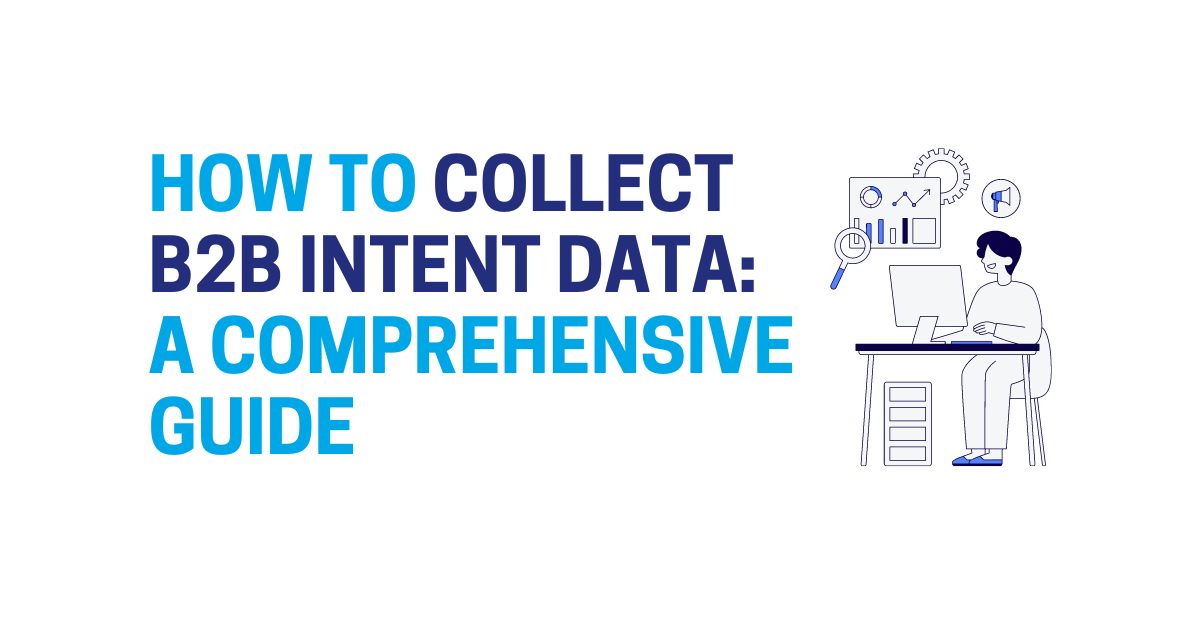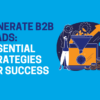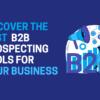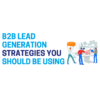How to Collect B2B Intent Data: A Comprehensive Guide
Let’s face it: B2B marketing is hard work. To keep the attention of businesses that are in the thralls of being pitched, emailed, and called is no easy feat. What if you had a way of knowing when they were ready to actually listen to you? Well, that is where B2B intent data comes in. You know, kinda like having some sort of crystal ball of what companies are gearing up to make decisions. Where do you even start compiling this magical data? Take a deep breath, and let’s get this straight for you, breaking it down step by step so that you can null those signals into solid leads.
Understanding B2B Intent Data
Knowing what B2B intent data is and why it matters are basic requirements of any marketer or business leader. It is the difference between chasing leads in the dark and being able to meaningfully engage with a prospect at precisely the right time. That’s what B2B intent data does: it helps you understand not just who is interested in your product but when they’re ready to act.
- It’s about the understanding of intention. B2B intent data shows you what businesses are actually searching for or considering. Just imagine knowing which firms out there are researching your product before they even land on your website! That is the power of intent data.
- There are two types of intent data: internal and external. Internal intent data comes off your website—it can include page views, downloads, or clicks from email communications. External comes from third-party sources: review sites, industry forums, and the like. Both are effective ways to keep your thumb on what your prospects might be thinking or doing.
- Behaviour tells the story. Whether a business is downloading your whitepapers or attending your webinars, those behaviours point to their intent. And when you connect the dots, you start to see who’s ready to buy, enabling you to focus your efforts on the hottest leads.
Steps on How to Collect B2B Intent Data
OK, so we have established that intent data is something of quite high value, but how do you actually gather it?
- It all starts with your website. Utilise tools like Google Analytics to deeply understand what visitors are doing on your website. Are they reading product pages? Maybe they have signed up for your newsletter? These are clues that they are interested, and where these interests lie will be multiplied after adequate tracking goes into place.
- Look at third-party data providers. Companies specialising in B2B data providers in the UK, for example, capture intent data from across the web. They find for you businesses currently in an active research phase of topics relevant to what you offer.
- Email is the gold mine. If you have an engaged audience, mine your email databases. Who’s opening your emails? Who’s actually clicking through to the site? That’s a powerful signal of intent.
- Create engaging content. High-value assets such as eBooks, case studies, and webinars are not only great materials for marketing; they are tools for data capture. When a person downloads a highly detailed report, it is often because they seriously consider a solution.
- Use specialised software. Yes, there are a series of platforms designed to gather intent data from across the internet to show which companies are on the hunt for what you sell.
The Importance of B2B Intent Data
Now that you know how to capture it, let’s talk about why B2B intent data is the real game-changer.
- It accelerates sales. Just imagine that your sales team focused only on leads actively researching your product. The cold call to companies not ready to buy would be history. This way, you cut straight to the chase and save plenty of time and resources.
- It refines your lead scoring. Traditional lead scoring is a little hit or miss, right? But then you layer in intent data, and all of a sudden, it becomes a whole heck of a lot more precise. You know which leads actually are interested, versus which are kicking the tires.
- Amp up your marketing. Gone are the days of email blasting the masses. Intent data actually lets you deliver personalised messages tailored to what a prospect is literally interested in. They will appreciate the relevance, and you will like the engagement.
- Amplifies account-based marketing. If you already have an ABM strategy in place, then intent data is a no-brainer. It enables you to zero in on the accounts that truly matter and create a customised approach tailored for each particular account.
- It aligns sales and marketing. Intent data aligns everyone to the same page. Sales and marketing aligned on the same insights work seamlessly together in closing deals faster.
Decoding the Process of B2B Intent Data Collection
This process may sound daunting, but when it is broken down, it really is not that huge of a task.
- Identify your sources of data. The first step in doing this is by ascertaining where your data is coming from. It could be your website traffic, email touch, or third-party providers that have built a specialty in providing a B2B database. Each source will provide you with different types of insights.
- Get your tech in sync. Your CRM should be connected with your marketing automation software and any intent data tools you may be using. This ensures the fact that the data that you collect is all centralised and you’re able to view it in one place, making life a whole lot easier.
- Everything is context. Just because somebody landed on your website, that does not mean they are ready to buy. Step back and look at the bigger picture—what are they doing while they’re there? The difference between casual browsing and genuine intent lies in the detail.
- Map it to the buyer’s journey. Not every interaction is a buy signal. By mapping these intent signals to where prospects are in the buyer’s journey, you’ll know when to engage and when to nurture.
- Segment like a pro. Once you have gathered enough data, segment it. This will help you tailor your messaging and offers for the various needs of such a group, hence maximising your chances of conversion.
The Role of B2B Intent Data in Business Strategy
B2B intent data burrows deeper than just providing leads; it is actually a tool that carves your whole business strategy.
- Make wiser decisions. By the time you have data to drive you, you will know where to put most of your concentration. You will have a firsthand view of which leads to focus on, where resources are channelled, and what kind of content is developed.
- Get ahead of the curve. With intent data, you are able to know what a prospect will do next. When they begin to research competitors or related products, get ahead of their needs and position yourself as the best option.
- Maximise your budget. You will get more bang for your buck because you are focusing your marketing spend on prospects already showing interest in your offerings. It’s a win-win—a scenario in which you are not wasting your money on leads that will never convert.
- Retain your best customers. The intent data will not only help but also contribute to customer retention. You will know through tracking intent signals if there is a chance of an existing client shifting to competitors; you can, therefore, take the required measures to retain those clients.
- Be different from the pack. Companies using intent data to inform their strategy are often more agile and proactive, thus giving you a competitive edge to win deals faster than others still hanging on to traditional methods.
Overcoming Challenges in Collecting B2B Intent Data
It’s not all smooth sailing when it comes to collecting intent data, but challenges can be overcome if you know what to watch out for.
- Exercising privacy is a big one. With data regulations tightening, think GDPR; you’ve got to be careful around how you’re collecting and using data. Make sure you’re being transparent to these users with what you’re collecting and why. Always get consent!
- Data fragmentation. If one’s data is scattered across different systems, then it will not be easy to form a complete picture of one’s prospects. Integrating your systems will keep you away from any possible data silos and prevent you from losing any precious insights into information.
- Misinterpreting the data. Without the context, one can easily jump to conclusions based on raw numbers, but intent data needs context. For instance, unless a spike in traffic is received, one may never know if an imminent buying decision may be at hand—but most likely, it’s just curiosity.
- Quality over quantity. It’s about collecting data, but that does not mean that the more data you collect, the better it will be; please, signal quality matters. You want actionable insights, not an enormous amount of information.
- Keep up with the technology developments. Intent data tools move forward in development continuously, and you will have to do the same to keep up. The outcome of failing to keep yourselves updated with the latest technologies could be losing a severe update that may improve data gathering and interpretation.
How B2B Intent Data Shapes Business Decisions
Using intent data is not just about dialling in your sales strategy; it changes how one will be making business decisions in practice.
- Monitor market trends early. You can spot emerging trends with intent data even before they become fast-moving. Therefore, you will be a step ahead in positioning your products or services to meet that demand.
- Sales get laser-focused. Intent data lets your sales team concentrate on leads most likely to convert. It means no more blind hunts into dead ends, enabling them to focus on prospects showing actual interest in them, thus giving meaning to each interaction.
- Resonating content. If you know what interests your audience, then you can develop content in the way that speaks to them, not just at them. You aren’t guessing what they want; you are giving it to them, and that reflects in your engagement.
- Measure, adjust, repeat. Intent data isn’t a one-and-done kind of thing. It is about bringing in data from how that intent tracks with your marketing effort, making constant improvements to strategies for improved results with each campaign.
- Forecasting becomes easier. With intent data, you will get a much clearer notion of where your sales pipeline is headed—with an estimate of which leads are likely to convert and when to make revenue forecasting more accurate.
Demystifying B2B Intent Data
If the whole concept of gathering B2B intention data overwhelms you—let’s be clear—you are not alone. But let’s take some of the mystery out of it.
- It’s actually quite accessible. You need neither terribly sophisticated nor expensive tools to get started, though the fact is you can start with probably what you are already using, like Google Analytics, and scale from there.
- It’s data, not magic. While intent data sometimes feels like reading minds, it’s just a matter of observing a pattern and behaviours. Think of it as piecing together a puzzle.
- It makes more sense when projected against other insights. That intent data magic happens when combined with demographic and firmographic info. All of these combined provide you with a well-rounded perspective of who your prospect is and what their needs are.
- It’s ever-changing. B2B data collection forms one of those industries where change occurs day in and day out. Be flexible; be hungry for more knowledge, and change your strategies whenever new tools and techniques are introduced.
- It is not a one-size-fits-all solution. B2B intent data is powerful, but it’s not a silver bullet. Combine this with strong marketing, great customer relationships, and a thoughtfully developed strategy.
Presenting to you: The Ultimate Guide to Collect and Use B2B Intent Data. Be it building your business to business database in the UK or fine-tuning your email marketing, intent data just changed the game. You will be miles ahead of the competition by truly understanding what your prospects are looking for and acting upon it.[/vc_column_text][/vc_column][/vc_row]

Ryan Whyte is a Director of The Lead Generation Company where he leads a team of B2B telemarketers to deliver high-quality leads for clients. With a strong background in campaign management and a focus on driving results, Ryan is dedicated to optimising strategies that maximise client success in B2B lead generation.



















